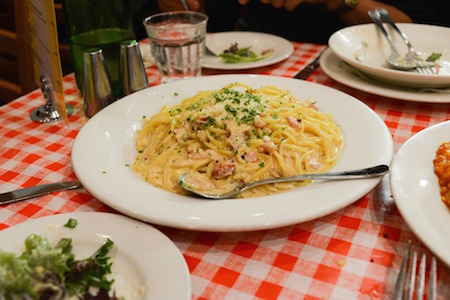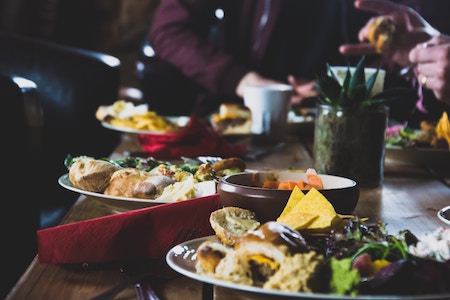PREPARE YOURSELF
✓ Call ahead to make reservations and find out about any special restaurant features (cash only, vegetarian options). Calling ahead can also make it easier for the venue to comfortably accommodate you.
✓ Print out a menu and make copies for students.
✓ Check directions and travel time.
✓ Decide how much money you will spend per student.
✓ Prepare all materials before you leave.
PREPARE YOUR STUDENTS
✓ Tell students the purpose and structure of the trip so they know what to expect.
✓ Be explicit about your expectations for students’ behavior and participation. Set clear guidelines and continuously reiterate them.
✓ Depending on the age of your students, you may want to assign buddies to help keep track of everyone.
✓ Conduct a lesson prior to the trip to allow students to assess prior knowledge of the location and learn a bit of background. This might include reading reviews of the restaurant or viewing photos of the restaurant. If students have been to the restaurant before, ask them to share what they experienced; if they have not, ask them what they expect to experience (chart these answers to compare with what they actually experienced). If the restaurant will be a new cultural experience for students, discuss what they already know about that culture.
✓ Show your enthusiasm for the trip; you will create excitement in your students.
OBJECTIVES
Students use addition, multiplication, and division to calculate bill and tip totals.
Students practice proper restaurant etiquette.
MATERIALS
Restaurant menus (dim sum is recommended since it requires students to add more items)
Pencil and paper
Video projector/TV
Etiquette video/percentage video
KEY VOCABULARY/CONCEPTS
Budget Tax Tipping Etiquette
Hook: What is your favorite restaurant and why do you love eating there? Students share experiences.
Step 1: Explain that students will take a trip to a restaurant in order to practice calculation skills. Their goal is to successfully order food within their budget by calculating the total including the tip.
Step 2: Provide students with menus from the restaurant. Ask them to look over the menu and highlight items they may want to order.
Step 3: Ask students to estimate the amount of money they would need to have a full meal. Then provide them with the total they will have to spend.
Step 4: Model adding the price for each item ordered. Remind students they need to save some money for tax and tip.
Step 5: Depending on the math level of students, model calculating the percentages for tax and tip and adding to the total. For lower levels, use estimation.
Independent Practice: Students calculate various ways of ordering that fit within their budget.
Partner Work: How embarrassing would it be to arrive at the restaurant and not have enough money to pay for your meal? Students check their partner’s work. All students should have their plan approved by the teacher.
Share Out: Invites several students to share their ordering plan and how they calculated the totals.
Activity: Take students to the restaurant. Have them order, eat, and calculate and pay their bill.
EXTENSIONS
1. Before you go, discuss good table manners. Read a list of good table manners or watch a video discussing what to do (and not to do) at the table. Discuss why manners are important.
2. For students who need extra help finding a percent for tipping, this is a good video tutorial.



